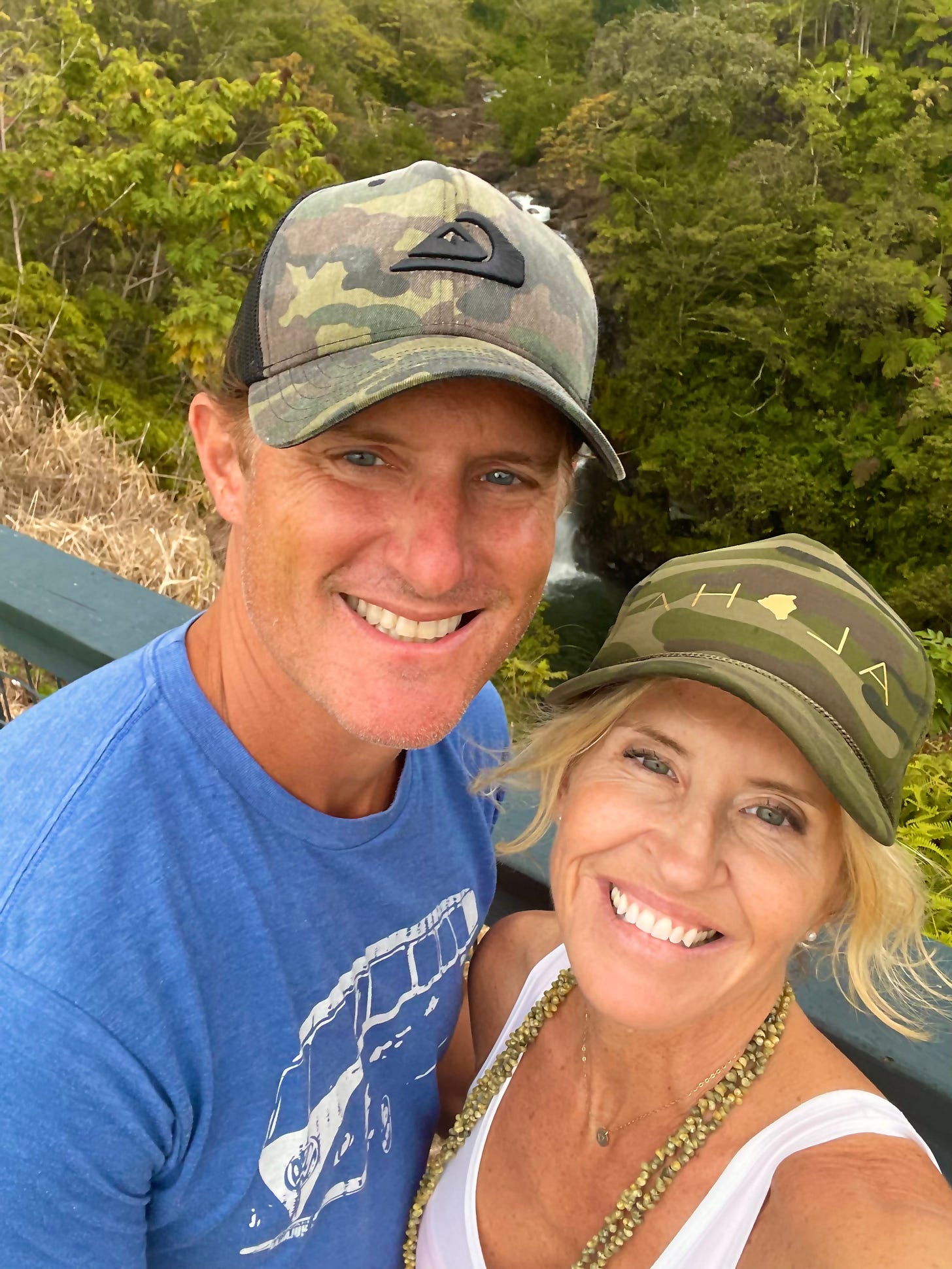5 Grounding Practices to Help You Shift Out of Survival Mode
Gentle, trauma-informed ways to calm your nervous system and reconnect with your body.
By Kristin Francis | Complex PTSD Warrior
Summary:
When survival mode takes over, it’s not about willpower — it’s your body trying to protect you. In this post, I’m sharing 5 simple, trauma-informed practices that help me come back to myself when I feel overwhelmed, frozen, or like I’m spiraling. Each practice includes how to do it, why it helps, and when to use it — so you can begin building safety in your body, one moment at a time.
Even with years of inner healing work, there are still days my nervous system goes into overdrive.
Sometimes it’s triggered by stress I didn’t see coming.
Sometimes it’s emotional pain I didn’t fully process.
Sometimes it’s just the weight of being human.
When that happens, I don’t try to “power through” anymore.
I pause.
I breathe.
And I turn to these simple practices to help me come back to the present — gently, slowly, without judgment.
Each one offers support for those moments when everything feels overwhelming, numb, or too much — and they’ve helped me feel grounded when I needed it most.
🧰 5 Gentle Tools for Complex PTSD Survivors
🖐️1. Massage lotion into your hands or feet slowly
How to do it:
Choose a calming lotion or oil. Sit comfortably and begin gently massaging it into your hands or feet. Feel the temperature, texture, and sensation under your fingertips. Let your touch be slow and intentional. Pause at sore spots. Don’t rush.
Why it helps:
This stimulates pressure and touch receptors that tell your nervous system: You’re safe now.
It brings you out of dissociation, softens tension, and reawakens sensory connection — especially if you’ve gone numb.
Use this when:
You feel disconnected from your body
You’ve been shut down or frozen
You need a safe ritual to unwind at the end of the day
💗2. Place your hand on your heart and say:
“I have enough. I do enough. I am enough.”
How to do it:
Gently place one or both hands on your heart. Close your eyes if that feels safe. Breathe slowly. On the exhale, repeat this affirmation aloud or silently:
I have enough. I do enough. I am enough.
Repeat 3–5 times, letting the words settle into your body.
Why it helps:
Self-touch over the heart activates the parasympathetic nervous system and creates a sense of safety.
Pairing that with affirming words helps counteract old trauma narratives of not being enough — soothing the inner child and nervous system at once.
Use this when:
Shame or self-doubt shows up
You feel like you’re failing or falling short
You’ve been over-giving or people-pleasing
🌀3. Draw spirals or shapes with no goal
How to do it:
Grab any pen, pencil or marker and a blank piece of paper. Begin drawing spirals, loops, or shapes — whatever your hand wants to do. Don’t think. Don’t judge. Just let the movement flow.
Why it helps:
This is a form of bilateral stimulation and free-form expression.
It gives your brain a sensory-motor outlet while gently regulating your system.
It pulls energy out of the thinking mind and into creative movement — especially helpful after spiraling thoughts.
Use this when:
You feel restless, anxious, or stuck
You’re trying to calm racing thoughts
You want to ground without needing words
✋4. Rub your fingertips together slowly
How to do it:
Touch your fingertips together and begin to gently rub in small circles.
Feel the texture, friction, and warmth. Slowly move down to the palm or up your forearm.
Stay curious. You’re simply noticing.
Why it helps:
This tiny tactile movement grounds you through sensory input.
It’s especially powerful for C-PTSD because it reestablishes contact with your body in a subtle, non-invasive way — and can be done anytime, anywhere.
Use this when:
You’re in public and feel overwhelmed
You’re coming out of freeze
You need to feel “in your body” again without overstimulation
👏 5. Try gentle tapping (bilateral stimulation)
How to do it:
Sit comfortably. Place both hands on your thighs.
Begin gently tapping back and forth — left hand, right hand, left hand, right hand.
My personal go-to is the Butterfly Hug: cross your arms over your chest and gently tap your shoulders in an alternating rhythm.
Let the tapping feel rhythmic and calming — no pressure to get it “right.”
You can also add a soft, low hum as you tap — a gentle vibration through your chest and throat.
Humming stimulates the vagus nerve, which plays a key role in calming the nervous system. It can help lower your heart rate, soften muscle tension, and signal to your body that you are safe.
Why it helps:
This rhythmic stimulation calms the amygdala (your brain’s alarm system) and helps process overwhelming sensations.
It’s often used in EMDR and somatic therapy to help the nervous system return to regulation after a stress response.
The added humming deepens the effect by activating your body’s natural calming system — the parasympathetic response.
Use this when:
You’re feeling stuck or frozen
You notice racing thoughts or rising panic
You want a quiet, movement-based way to release stress
Quick Definitions (in plain language)
If you're new to nervous system work or trauma recovery, here are a few terms you may have seen in this post — and what they actually mean:
🌡️ Dysregulation
When your nervous system is thrown off balance — you might feel anxious, numb, shut down, panicky, or angry for reasons you don’t fully understand.🧠 Amygdala
The part of your brain that scans for danger. In Complex PTSD, it can stay “on high alert” even when you’re actually safe.🧘♀️ Parasympathetic Nervous System
This is your body’s natural calming system. It slows your heart rate, softens tension, and helps you feel safe and steady.🦋 Bilateral Stimulation
Gentle back-and-forth movement (like tapping one side of your body, then the other). It helps calm your brain and process stress more effectively.
Want More Tools Like These?
Here are two curated resources I created specifically for Complex PTSD survivors:
🧠 The Emotional Flashback Guide — Available now on Etsy
Includes trauma-informed journaling prompts + a nervous system regulation cheat sheet
🛒 Grab it here
🌿 The Free Get Grounded Guide —
Five simple practices, safety anchors, and sensory tools like these.
♥️ If this resonated with you… or made you feel seen
I’d love to have you stick around.
Free subscribers get weekly posts like this — grounded in lived experience, nervous system education, and tools for real healing.
Paid subscribers receive even more: deeper reflections, exclusive content, and weekly curated tools to support your Complex PTSD journey.No pressure — just extra support if and when you need it.
📌 About Us:
We’re Kristin & Travis Francis — founders of Complex PTSD Warrior.
We provide trauma-informed education and support for healing your nervous system, repairing relationships, and breaking generational cycles — using curated tools rooted in neuroscience and lived Complex PTSD experience.
Our mission is to spread Complex PTSD Awareness, Education & Tools around the world.
If this post helped you feel seen, understood, or less alone — we’d be so grateful if you shared it with someone who might need it too.
It might be the message they’ve been waiting their whole life to hear.






What has helped me the most cope with PTSD was getting a dog.
Meditation and surrounding oneself with nature, especially trees or ancient stones such as the Grand Canyon.